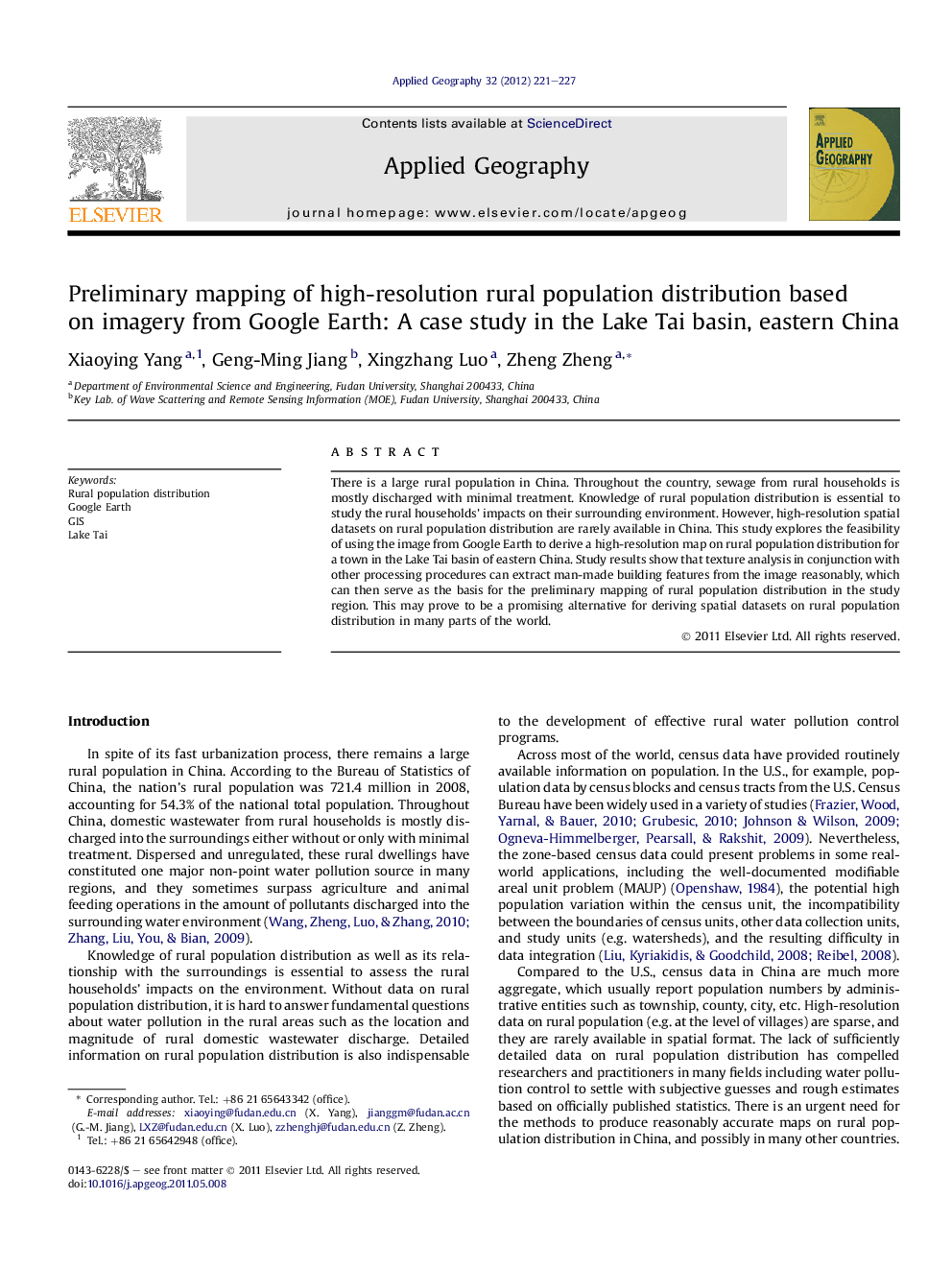| Article ID | Journal | Published Year | Pages | File Type |
|---|---|---|---|---|
| 83550 | Applied Geography | 2012 | 7 Pages |
There is a large rural population in China. Throughout the country, sewage from rural households is mostly discharged with minimal treatment. Knowledge of rural population distribution is essential to study the rural households’ impacts on their surrounding environment. However, high-resolution spatial datasets on rural population distribution are rarely available in China. This study explores the feasibility of using the image from Google Earth to derive a high-resolution map on rural population distribution for a town in the Lake Tai basin of eastern China. Study results show that texture analysis in conjunction with other processing procedures can extract man-made building features from the image reasonably, which can then serve as the basis for the preliminary mapping of rural population distribution in the study region. This may prove to be a promising alternative for deriving spatial datasets on rural population distribution in many parts of the world.
► Use texture analysis to extract building features from the Google Earth image. ► Validate the building classification results with a 1:15000 paper map. ► First to use the Google Earth image to derive high-resolution rural population map. ► Analyze the spatial pattern of rural population distribution and its implications.
